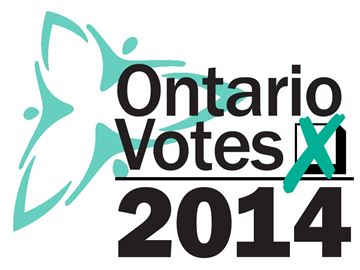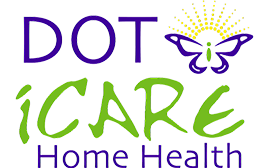Ontario Votes 2014: This Is Not Your Father’s Election, However This One Will Affect Elderly Care Services

There’s an election going on. Are you tuned in or out? Have you tuned out the politicians?Are you planning on sitting out the vote? If you’re a boomer, close to retirement, retired or have family members that do or will require home care services…Pay Attention! When it comes to your health, the upcoming provincial election results will affect you in one way or another.
Some aging related health facts to consider:

- We live longer. According to Statistics Canada, even though retirement is at age 65, on average men are expected to live beyond 80. Women can look forward to blowing candles beyond their 86th birthday. At iCare Home Health, it’s common to serve clients in the 90’s. Some are over the 100 years old and in relatively good health.
- Retirees are set to out number Canada’s youth for the first time. The ratio of persons 15 to 24 years old compared to those 55 to 64 has fallen from a high of 2.4:1 in the mid 1970’s to a 1:1 in 2013 and falling. Translation – there is less income tax revenues coming in to support the approaching grey Tsunami of retirees.
- Home care makes financial sense to both government and Ontarians. 85% of patients in hospital beds are seniors. According to a report by the Canadian Institute of Health Information, 47% of seniors who complete their acute care stay in a hospital are waiting to be moved to a long term care facility such as a nursing home, rehab or a home with support. An in-hospital acute care bed costs $1,100 a day, compared to 25% of that cost for a bed in community care.
- The Health Care system is costly.Canada has one of the costliest healthcare systems in the world. In Ontario, total health spending was $75.5 billion or 12.3% of the GDP
- The government drug program is costly. Aimed at the population aged 65 and over, this will add about 3.5% annually to the aforementioned programs.
- Ontario’s Health Care delivery is not as public as people think. While Ontarians focus on the public component of health care, latest OECD data show that the public sector accounted for 70.6% of all health care spend in Canada. Private insurance and out of pocket payments make up the difference.
Is the Home Care Delivery System Sustainable?
Currently, Ontarians receive home care as follows:
There are fourteen (14) Community Care Access Centres (CCAC) in Ontario that coordinate delivery of a range of services in the home and community including medical care provided by nurses, rehabilitation services, personal support and home making services. The Local Health Integration Network (LHIN) key role is to plan, integrate the system and fund case management. The CCAC can be accessed at point of discharge from a hospital or contacted directly for an in-home assessment.
The services are delivered through a patchwork of four health care agencies that have been selected through an RFP process back in 2002. However, the competitive bidding process has been frozen since 2008. On that topic, concerns were raised in the 2010 Ontario Auditor General Report about the quality and value of home care services.
Watch an episode of TVO’s The Agenda with Steve Paikin to learn more.
To balance budgets, the CCAC manages the volume of services provided to clients by restricting the number of hours of care per week, or by placing patients on wait lists for services. Clients can that need more home health care can also purchase additional services from service provider agencies directly.
The above issue is highlighted further by submissions from the Ontario Ministry of Finance where they state that
“long-term care, community care and home care are currently underfunded, with more emphasis on long-term care facilities while there should be more integration of services with more weight given to home care.”
“There should be no bias towards public or private sector service delivery. Both options should be fully tested to see who provides the best service. The government will remain the payer of both public and private covered services delivered.”
Meanwhile, in the PC Party white paper on Health promotes a different approach to the incumbent Liberals. The PC Party advocates patient centric health care where patients would have the freedom to choose their service provider from an open and competitive market place. This is more in line with the conservative less government and more free market approach. A blend of the current system would remain in place to keep the guardrails in place and protect the public from poor service providers.
Finally, the NDP seem to have moved closer to the centre from the left. Based on the chart below, the NDP approach is to continue on the Liberal path while promising better results.
Who should you vote for?

iCare Home Health is not endorsing any of the competing parties. The answer for the above question is…
- Who’s vision of Ontario’s health care direction do you share?
- Who do you trust to deliver on their vision?
The Chart below summarizes each parties position as posted on their own websites.
| PC | Liberal | NDP |
| Patient centric health care | Patient centered health care | |
| Scrap Liberal-created Local Health Integration Network (LHIN) | Expand home, community and supported home care for 46,000 more seniors. | Cut waiting time in ER rooms by half |
| Expand Long-term availability by 5000 beds | Increase min wage for 34,000 Personal Support Workers in the public home care sector by $4/ hour by 2016 | Hire 250 more nurses to staff ER |
| Expand at-home health care to keep seniors health at their own home | Eliminate service wait time lists for 21,000 people with developmental disabilities. | Empower nurse practitioners to assess patients, order tests and write prescriptions. |
| Double caregiver tax credit for those who care for an elderly family member. | Create Nursing jobs by making it easier for graduates to get into nursing jobs. | Open 50 new 24 hour family health clinics to reduce pressure on ER |
| Encourage choice & competition in the public health system including choice of home care agencies | Strengthen the accountability of services among home care service providers and Community Care Access Centre (CCAC) | Eliminate wait lists for home care and long-term care beds. |
| Expand more nursing jobs in the future. | $6 million towards additional paramedics | Peg home care wait to 5 days. |
| Direct new found savings towards treatment of people with chronic and mental health illnesses. | Support families caring for the ill and elderly with a Care Giver Tax Credit | |
| Renovate 35,000 beds over 10 years to give seniors additional privacy & dignity. | Attract doctors to under serviced communities by forgiving student debt | |
| OTHER: | Secure retirement income with Ontario Pension Plan | Take HST off home hydro bills |
| Reduce auto insurance rates by 15% |
One last thought, Remember…Nothing is Free!
Remember: Free Public Health Care is not really…..Free! Premier home care will come at a cost. We all pay one way or another, either through higher taxes, blended government+user fees or straight out of pocket!

